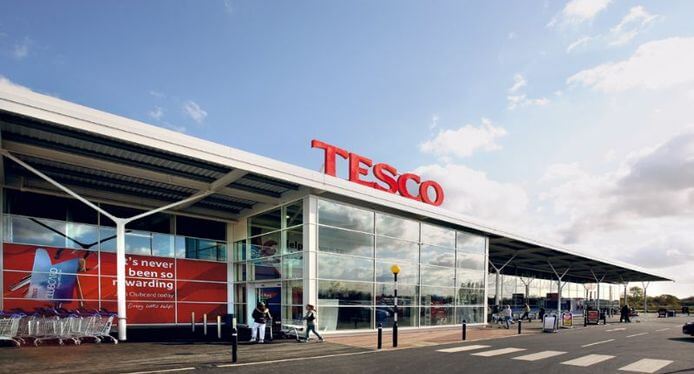Tesco have announced results which show the first period of growth for 3 years. As part of many cost cutting approaches, delisting brands such as Carlsberg, the 4th most popular lager in the UK, was seen as a bold strategy when announced and ‘probably’ a mistake. The Big 4 UK supermarkets have been competing with the German discounters Aldi & Lidl, as well as each other, for market share. Clearly to improve their offer to customers, Tesco have been looking at their German rivals to see what they can learn. Whilst Aldi is increasing its market share in the UK, to become the 6th largest supermarket, their business model shows just how big a disruptor they really are.
An average sized UK supermarket usually sells 30,000 products. Tesco, leading the hypermarket charge in the UK gave customers 90,000 items to choose from, with 126,000 on offer in Tesco Extra stores. Aldi sells 1,400 items…in total. They offer one choice per items they sell eg one bottle of tomato ketchup versus 28 in a standard Tesco; one air freshener from Aldi against the 226 choices available from Tesco. Aldi has developed its business model and has become so successful; it is now the 8th largest retailer in the world.
Reengaging customers is core to Tesco’s strategy of reclaiming customers from the German discounters.
Tesco, clearly seeing possibilities in mirroring some of the same propositions as Aldi, have decided to reduce the number of items they sell by 30%. Choices in some areas, such as air freshener, may be reduced by more than 30%.
Other than Aldi’s success, there is science behind the impact of reducing choices. A TED talk from Colombia Business School in 2011 demonstrates fewer choices can help customer engagement. Proctor & Gamble reduced the options available with their Head & Shoulders brand from 26 to 15 and saw a 10% increase in sales. Golden Cat Corporation got rid of their 10 worst selling varieties of cat litter – an 87% increase in profits followed. After highlighting these examples, the Colombia presenters revealed their own research which demonstrated stronger customer engagement could be achieved by reducing the choices offered.
Reengaging customers is core to Tesco’s strategy of reclaiming customers from the German discounters. This rise in sales clearly shows the reduction of products on offer is not having an adverse impact on Tesco sales, and they are starting down a more profitable path.
What we know for sure at SWL…The offer at Tesco is clearly increasing its appeal to customers who are returning. The surest way to enhance customer engagement is to involve them in decisions being made, which promotes stronger customer loyalty. The best way to confirm customer satisfaction with changes to operations and shape a better store future is with SWL’s Continuous Customer Engagement (CCE) solution.
Get in touch with us to find out more.

